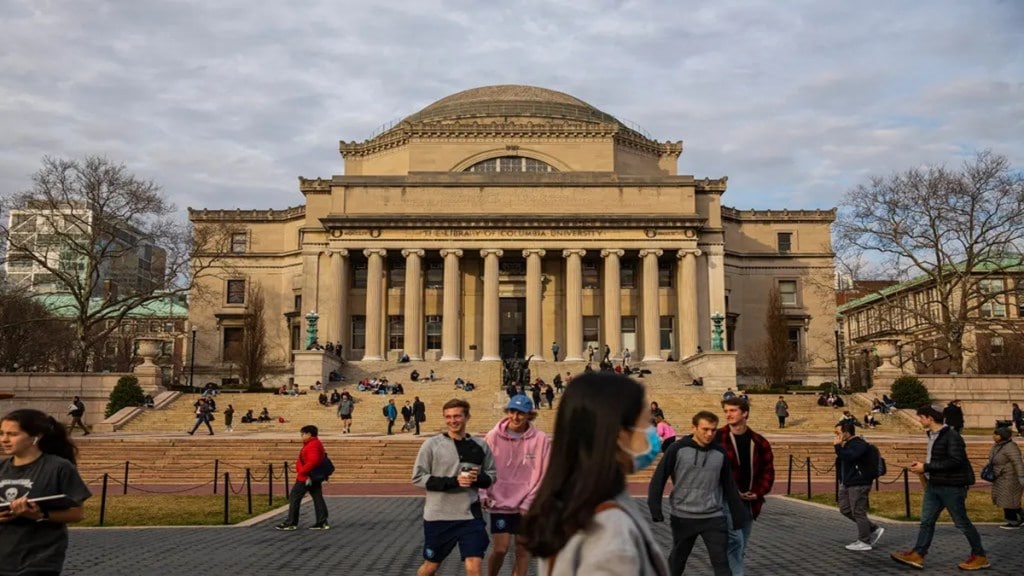Indians sending money abroad for education purposes seem to have hit a roadblock. The US is one of the most popular study abroad destinations for Indian students. But recent data shows the number of Indian students studying in the US has decreased significantly over the past year. Boston College Professor Chris R. Glass’s analysis reveals a 28% drop in Indian students from March 2024 to March 2025.
If fewer Indians are going abroad for studies, the outward remittances will also fall. This is what recent RBI data reveal.
The recent RBI data shows a declining trend in the total outward remittance sent abroad by Indians for studying.
In 2025, the remittances for studies abroad fell from $368.21 million recorded in January to $182.17 million in February, a 50% fall month-on-month.
Yearly numbers are also showing a falling trend as funds remitted by students for studies abroad fell to $2.92 billion in FY2025 from $3.48 billion a year ago, nearly 16% lower. 1 billion US dollars is close to Rs 8,000 crore.
From the peak of $4.98 billion in FY2019- 20, just before the pandemic, when Indian students were flocking to foreign universities in large numbers, remittances for education have slumped 40%.
There could be a declining trend that could be revealed in the months ahead. For 2023-24, the average monthly remittance was approximately $300 million. On that basis, the $182.17 million recorded in February appears to be a concerning figure.
“The steep decline in student remittances under India’s Liberalised Remittance Scheme (LRS) in FY2025, particularly a 50% month-on-month drop in February, signals a complex interplay of temporary disruptions and potential long-term shifts”, says Pavan Kavad, Managing Director of Prithvi Exchange.
The shifting international student regulations in a number of nations may be a significant reason why Indian students are looking inside and choosing not to study abroad.
Many countries modified their non-immigrant laws, affecting overseas students, by implementing new visa regulations, requiring higher income verification, and restricting the stay of dependents. “Several factors have contributed to this fall, including stricter visa policies in popular destinations such as Canada, the UK, and Australia, which have led to a 25% reduction in Indian students receiving study permits,” adds Kavad.
All Indians have to adhere to the Reserve Bank of India’s Liberalised Remittance Scheme (LRS) rules while sending any outward remittances. Under the RBI’s Liberalised Remittance Scheme, every Indian resident, including minors, is allowed to remit up to 2.5 lakh US dollars (USD 2,50,000) per fiscal year. This translates to nearly Rs 2.13 crore per individual per year at current exchange rates.
The imposition of TCS – Tax Collected at Source – could also have impacted the outward flow for education purposes. A TCS of 5% is applicable if one sends funds exceeding Rs 7 lakh abroad for educational purposes from one’s sources. However, a reduced TCS rate of 0.5% is applied if it is an educational loan.
Budget 2025 increased the thresholds for remittances overseas under the LRS program. From April 1, 2025, the threshold limit has been raised from Rs 7 lakh to Rs 10 lakh for all purposes including education. However, that may not be a big concern as the tax collected can always be adjusted against the ITR return.
“While some of these issues, such as economic volatility and policy changes like the increased TCS threshold, may ease in the near term, structural shifts suggest a more lasting change”, says Kavad.
Indian students are increasingly looking for higher education options in the United States, the United Kingdom, and Canada, as well as new locations such as Germany, Ireland, Japan, Australia, and Singapore. The Ministry of External Affairs data shows that the total number of students from India pursuing graduate and post-graduate studies in foreign countries reached 1.3 million (13 lakh) in 2024.
The number of students from India to the United States increased by 35 percent and resulted in an all-time high of 268,923 students in the academic year 2022-23. “Indian students remitting funds for education to the US typically spend between $25,000 and $55,000 per year, which translates to roughly Rs 20.75 lakhs to Rs 45.65 lakhs, according to upGrad. This includes tuition, living expenses, and other related costs. While the average tuition for top colleges is around $50,000 annually, living and meal expenses can add another Rs 8.85 lakhs per year, according to Shiksha,” informs Kavad.
A large portion of remittances for education abroad is sent to the United States, which remains one of the most popular study-abroad destinations.
“While the current slump in student remittances may partly be a temporary blip, the combination of regulatory, financial, and systemic changes points toward a longer-term recalibration in India’s student remittance landscape,” says Kavad.

